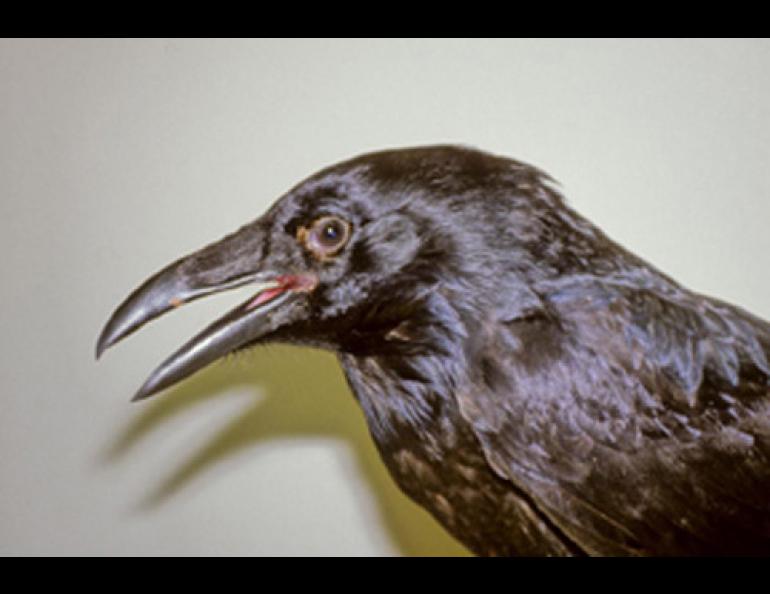
Renowned raven researcher visits Alaska
Some people are great runners. Some people write good books. Some follow their curiosity to figure out something no one else has.
Bernd Heinrich is all of the above. The University of Vermont professor, bestselling author, and record-setting ultra marathoner traveled to Fairbanks recently at the invitation of an old friend, George Happ of the Institute of Arctic Biology.
While here, Heinrich set up a tray of slides and spoke about one of his favorite subjects, ravens, to an audience that had just endured a long winter elbow to wingtip with the black birds.
“Coming to Alaska and talking about ravens is like hauling coal to Newcastle,” he said.
Heinrich, 67, wore a flannel shirt and running shoes, and had the light-footed-yet-rugged appearance of someone who could run loops on a track until he had completed 100 miles (which took him 12 hours and 27 minutes in 1984). He also once won the Golden Gate Marathon in San Francisco, and was that same year the top Men’s Masters (40 and older) finisher out of thousands at the Boston Marathon.
His editors at large publishing houses might not be aware of his running prowess, but they know of his books: “Bumblebee Economics,” “Insect Thermoregulation,” “In a Patch of Fireweed,” “One Man’s Owl,” “Ravens in Winter,” “An Owl in the House,” “The Hot-Blooded Insects,” “A Year in the Maine Woods,” “The Thermal Warriors,” “The Trees in My Forest,” “Mind of the Raven,” “Racing the Antelope (Why We Run),” “The Winter World,” “The Geese of Beaver Bog,” “The Snoring Bird,” “The Summer World.”
For a hint of why several of Heinrich’s books have landed on The New York Times Best Seller list, see the non-technical titles of his scientific journal articles, such as “How do bees shiver?” and “Do common ravens yell because they want to attract others?”
In Fairbanks, Heinrich spoke of how yelling ravens at a moose carcass in Maine sparked his interest in the birds. Why would any creature shout out the location of its food supply?
He went about finding the answer to that and other raven questions with uncommon effort. Dairy farmers donated dead cows and calves to Heinrich, which he would use to attract ravens during his research in the Maine woods. He then recorded calls of ravens and played them back to them. He climbed to raven nests and inserted pipe cleaners down the throats of new ravens to make them vomit venison and reveal what their parents fed them. Heinrich and his students once caught 43 ravens in one shot with a large trap, and he once dressed in a homemade wolf costume to see how ravens would react.
“They were even more afraid of me,” Heinrich said.





